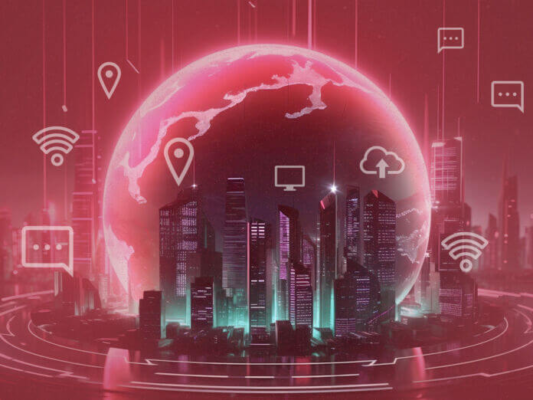

The Internet of Things can make city living a lot better. That’s a good thing, because cities are growing quickly. Around the world, more than half of us live in urban areas. In Western Europe, more than 80 percent of the population live in cities.
Rising population density creates challenges, of course, but IoT is uniquely suited to provide solutions. Smart cities—that is, an urban area in which the government and other actors use information technology to improve quality of life for residents—provide at least three strong benefits according to researcher Razan Amine:
- Digital transformation can make the work of governing more efficient, by digitizing everything from tax collection to utility billing.
- Smart city technologies can improve quality of life, helping to relieve traffic congestion, simplify parking, and maintain green spaces.
- Analytics and IoT devices work together to support environmental sustainability in both private and public sectors.
The ideal smart city technology is a network of networks, a system of systems, combining multiple IoT deployments into a single management portal. To get the benefits of IoT, you need that software hub—an IoT platform.
These software solutions provide several capabilities. First, they give you a centralized tool for managing multiple IoT deployments. You can log into a single environment to manage e-mobility, smart parking, and tourist services, as well as sensors for traffic, noise, air quality, and much more.
Secondly, the IoT platform provides some level of data processing. Raw information can’t help you make data-driven decisions. A good management platform for smart cities will include data mining, forecasting, and even simulation tools that deliver usable insights.
It can be hard to tell which IoT platforms are optimized for smart city use cases, however. There are lots of them. (The market for IoT platforms was worth $8.23 billion in 2024, and is expected to more than double by 2029).
A truly great smart city platform does more than the basics listed above. It combines IoT features with advanced capabilities to improve quality of life for residents, and boost efficiency for city operators.
What sorts of capabilities? Here are five things to look for in a smart city IoT platform.
5 Essential Capabilities for a Smart City Data Platform
If you operate in Europe, it’s essential to choose a smart city platform that complies with EU regulations. That requires strong interoperability for integration into the nine common data spaces. It also requires features that support EU Green Deal initiatives.
To meet the twin goals of EU-compliant data governance and environmental sustainability, your smart city’s IoT platform must offer the following features:
- Carbon neutrality. The quickest way to build a carbon-neutral smart city is to find a platform that supports sustainable IoT: smart utilities, low emissions zones, urban mobility, and smart manufacturing, for instance. A carbon-neutral IoT back-end helps you contribute to the European Climate Pact and other sustainability initiatives.
- AI analytics. Even big datasets from the Common European Data Spaces can’t help you make better decisions until that data gets transformed into insight. Machine learning and AI are making the information-to-insight pipeline much shorter.
- Real-time data availability. Many smart city systems require real-time data; just think of e-mobility or smart traffic lights, for instance. Look for a platform that offers connectivity, storage, and processing with low-to-no lag time.
- Robust, reliable, and accurate data delivery. You also need to be able to trust your IoT data. The ideal platform controls for out-of-order data and processing flaws to ensure totally reliable information (and performance).
- Integration with shared data ecosystems. Finally, we return to the notion of interoperability and standardization. Your smart city platform should be ready to integrate with Common European Data Spaces and other shared ecosystems.
When you’re building a smart city, your choice of IoT platforms makes a tremendous difference. That includes the difference between compliance with EU data governance rules and sustainability initiatives—or not. Choose wisely.


